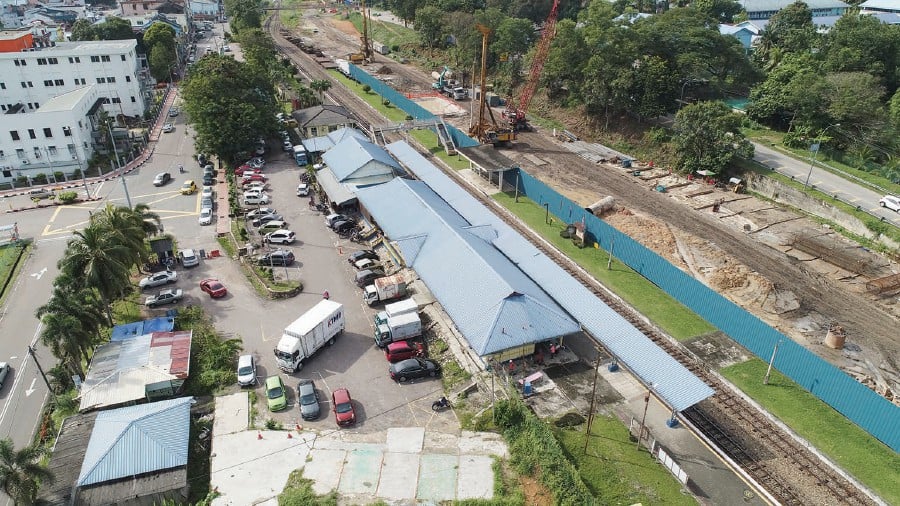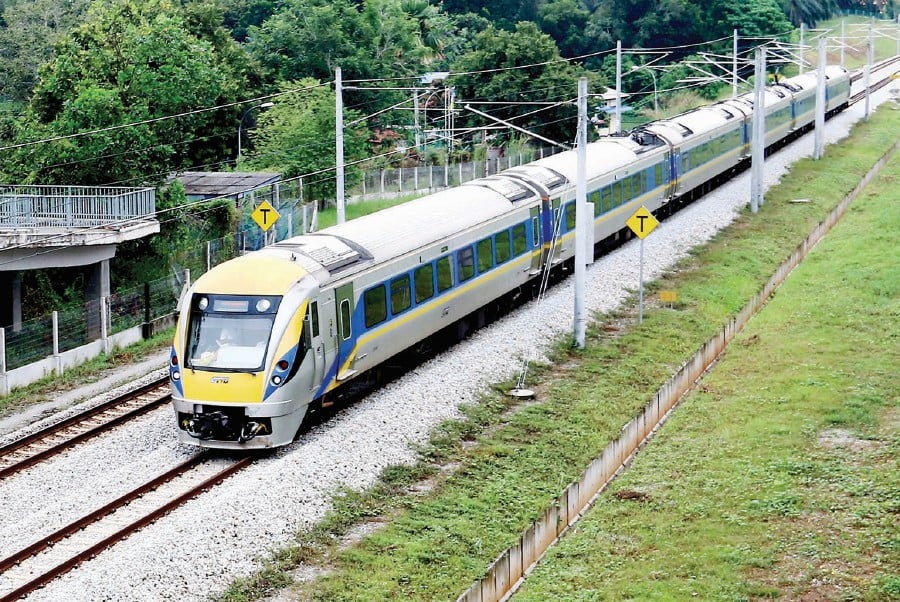
The Gemas-Johor Baru electrified double-track project is expected to boost Johor’s economy. YTL PIC
The history of Malaysian train system goes way back to 1885. The first railway line was constructed between Taiping and Port Weld during the Malaya era in 1885. In 1886, the line expanded to Kuala Lumpur and Klang, and in 1891, a new line was constructed between Seremban and Port Dickson.
KTM Bhd introduced the first commuter train service in 1995 to connect Kuala Lumpur and Rawang and Kuala Lumpur-Seremban.
“Railways connect places and bring people together. With the new KTM Southern Line stations, there is potential for even more transformation,” Yeoh said.
Yeoh said the construction of the new EDTP from Gemas to JB is being carried out with the objective of allowing KTM Bhd to deliver a better train service with improved travel times.
The upgraded southern line will cater for additional services daily involving KTM Electric Train Service, KTM Intercity and KTM Komuter, he said.

“Railways
connect places and bring people together. With the new KTM Southern
Line stations, there is potential for even more transformation,” Datuk
Yeoh Seok Hong, YTL Power International Bhd managing director
Bringing vital growth to an area
Yeoh said there are many worldwide precedents where redeveloped railways bring growth and vitality into urban areas. Examples such as Kings Cross in London or the Underline in Miami show that rail infrastructure can also transform the urban environment.
“With KTM Southern Line stations where small towns are developed around the old railway stations, there is a possibility for redevelopment of the areas in the vicinity of the stations,” Yeoh said, citing Kluang as an example.
Kluang, regarded by many as a small town and located about 2Ω hours from Kuala Lumpur, will be one of the biggest beneficiary of the Gemas-JB rail line.
Kluang was founded in 1915 as the administrative capital for central Johor by the British.
KTMB has a station in Kluang located at Jalan Stesen. The main railway line linking north to south Malaya was built passing through Kluang and this helped in its growth. There are many historical structures in the town like Hotel Merdeka and Taman Merdeka Kluang. Newer attractions include Kluang Street Art.

The upgraded Southern Line will cater for additional services daily involving KTM Electric Train Service. FILE PIC
In the next three years, the Kluang landscape will change with more green space coming up.
Yeoh said one of the major part of the works for the Gemas-JB project involves the construction of a rail viaduct almost 3km long and an elevated station at Kluang.
He said elevating the track will allow the two halves of the town, which for decades have been separated by the track, to be finally brought together and integrated.
“The elevation of the track opens up the possibility of reusing the land for public spaces such as green parks and recreational areas, bringing new life and rejuvenation into the town. As an example, the High Line, a repurposed abandoned railway track in New York, has become an icon of contemporary landscape architecture and is a major tourist attraction,” said Yeoh.
The High Line is a public park built on a historic freight rail line elevated above the streets on Manhattan’s West Side. The High Line opened in 2009 as a hybrid public space where visitors experience nature, art, and design.
The park features lush horticulture, artworks, seasonal food vendors, community programming, and unique views of the Hudson River and New York City skyline.
No comments:
Post a Comment